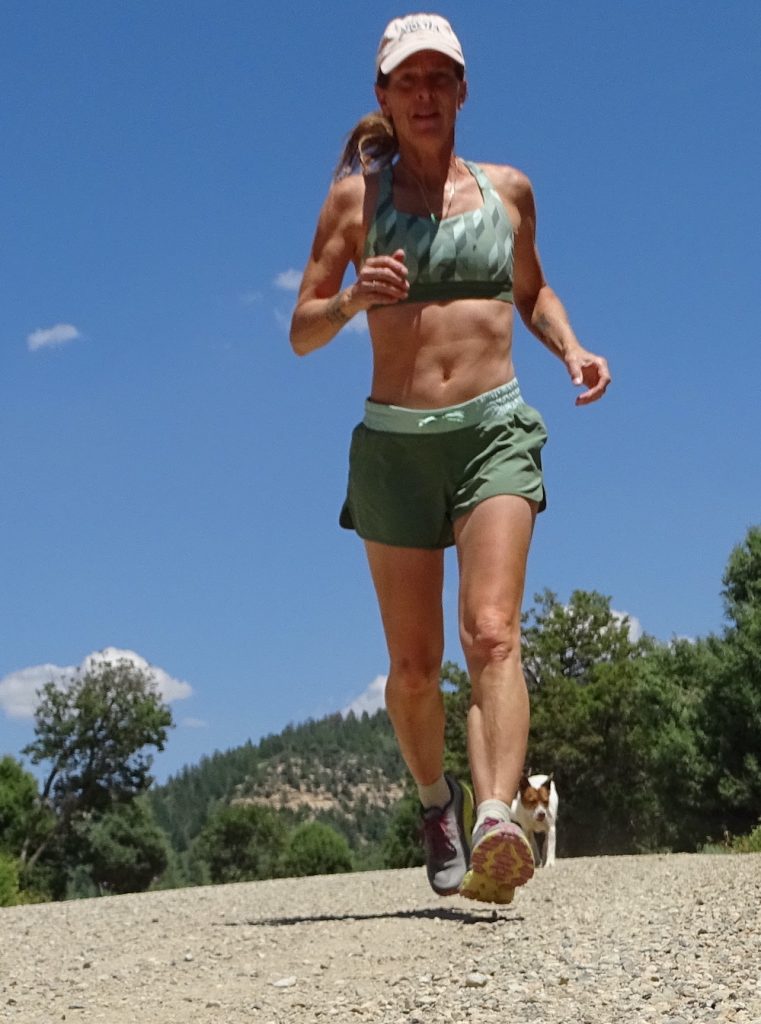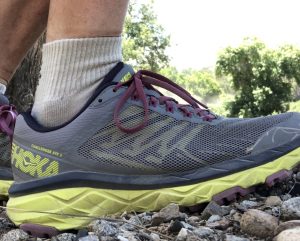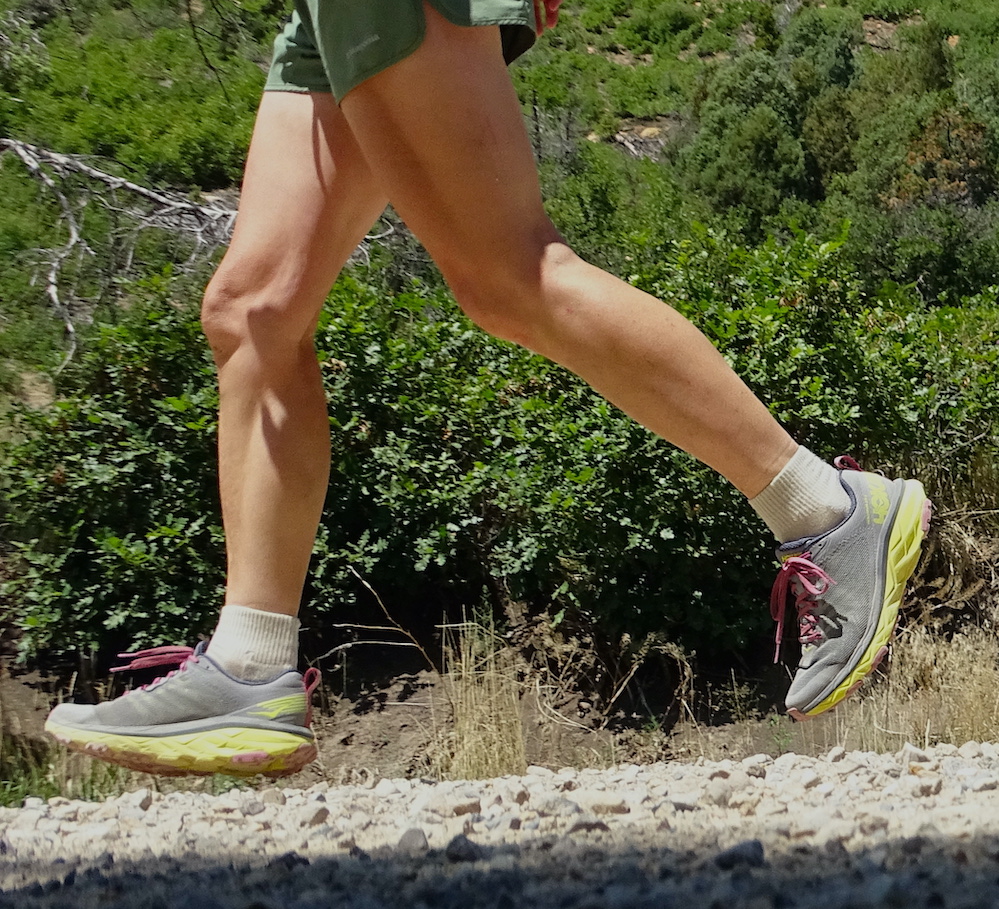
Hoka Challengers. Also pictured, Patagonia Nine Trails shorts and Switchback sports bra
Coming back from injuries stemming from scoliosis has been a slow and humbling process. Dr. Ellen Tomsic warned me that I could not approach recovery like a typical jock, or in the manner I’d practiced for decades. Going hard and running through pain is what had me in her office in the first place.
When reintroducing myself to running, I needed to adopt a kinder, gentler attitude. I stopped when it hurt, or even before it hurt. I listened to my back, hips, and thighs instead of my lungs. I didn’t run through the pain or run until breathlessness forced me to slow. I didn’t run every day, but alternated it with good hikes and rides.
Along with nightly physical therapy exercises, this new discipline and approach are yielding results. I’m no Katrin Silva, but four-mile runs and lengthy, sweaty hikes are new, normal, and joyous routines.
Thankfully, I’ve had support. My new Hoka Challenger ATR 5’s have been ideal for gradually adding mileage to my weeks. They’re ideal on my neighborhood’s gravel roads as I climb up hills and coast down the other sides. Support means no knee pain, no heel pain, no hip pain, no back pain. What a welcome change!
Hokas have a strong reputation for stability and cushion on trails. Online, the company’s styles are graded from ‘neutral’ to ‘stable’ in stability and ‘responsive’ to ‘plush’ in cushioning. The Challengers are mid-spectrum in both categories. That sounds like middle-of-the-road, but for me, coming from a series of other brands, the shoes seemed luxuriously cushioned and solid.

Hoka Challenger ATR 5
What’s surprising is Hokas’ lightness. It seems counterintuitive that a shoe with massive lugs (for excellent traction) and an oversized midsole would be light. They’re half the weight of my slippers. My slippers are blue and boring and fall off if I go faster than a shuffle.
These Hokas are vibrant yellow, magenta, and grey. As with most Hoka styles, though, you have LOTS of color choices. They’re easy on the eyes and easy on the feet. Happy feet means happy legs and happy back. Thank you, Hoka.
